TuyaOpen SDK Quick Start
Environment Setup and SDK Download
First, you need to set up the development environment and download the TuyaOpen SDK. For detailed tutorials, please visit the TuyaOpen Documentation Center.
Create Product
Go to the Tuya Developer Platform > Product Development page, click Create Product, select the category based on your product form, and refer to Create Product to complete product creation.

After entering the product development process, please focus on the following configurations: adding product functions, AI capabilities, and new firmware.
Add Product Functions
Under 01 Function Definition > Product Functions, click Add Function to add standard/custom functions to the product, or enable advanced functions.
To learn about product functions, please refer to Product Functions.
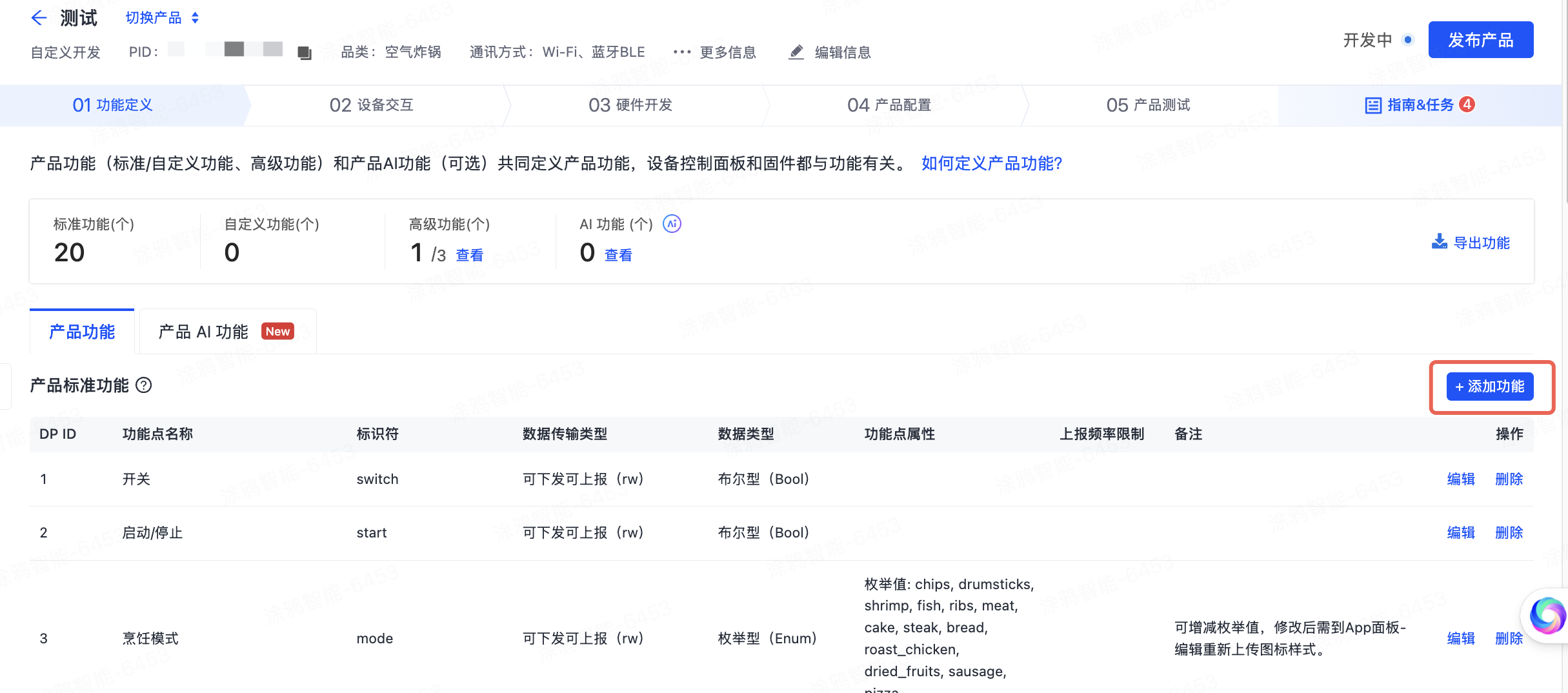
Add AI Capabilities
Under 01 Function Definition > Product AI Functions, click Add Intelligent Agent to add AI capabilities to the product.
After entering the intelligent agent development process, refer to Product AI Function Development to complete intelligent agent development. Focus on the following configurations:
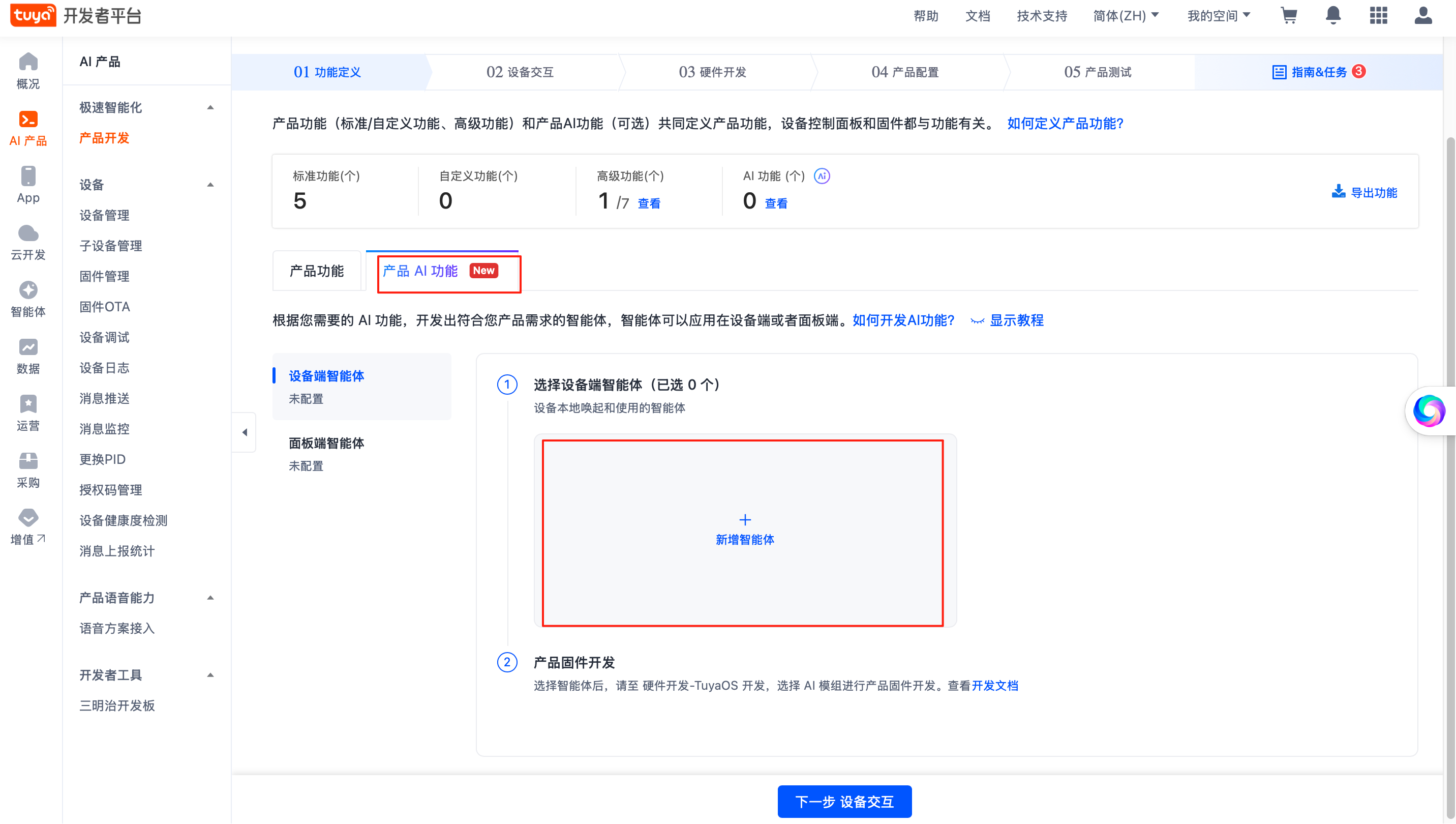
Add Tool Set:
- Under 01 Model Capability Configuration > Skill Configuration, select Tool Set, click the add (+) button on the right to enter the Add Tool page.
- Under Device Control > Device Self-Control - Only control devices associated with Agent, select to add Control devices bound to intelligent agent.
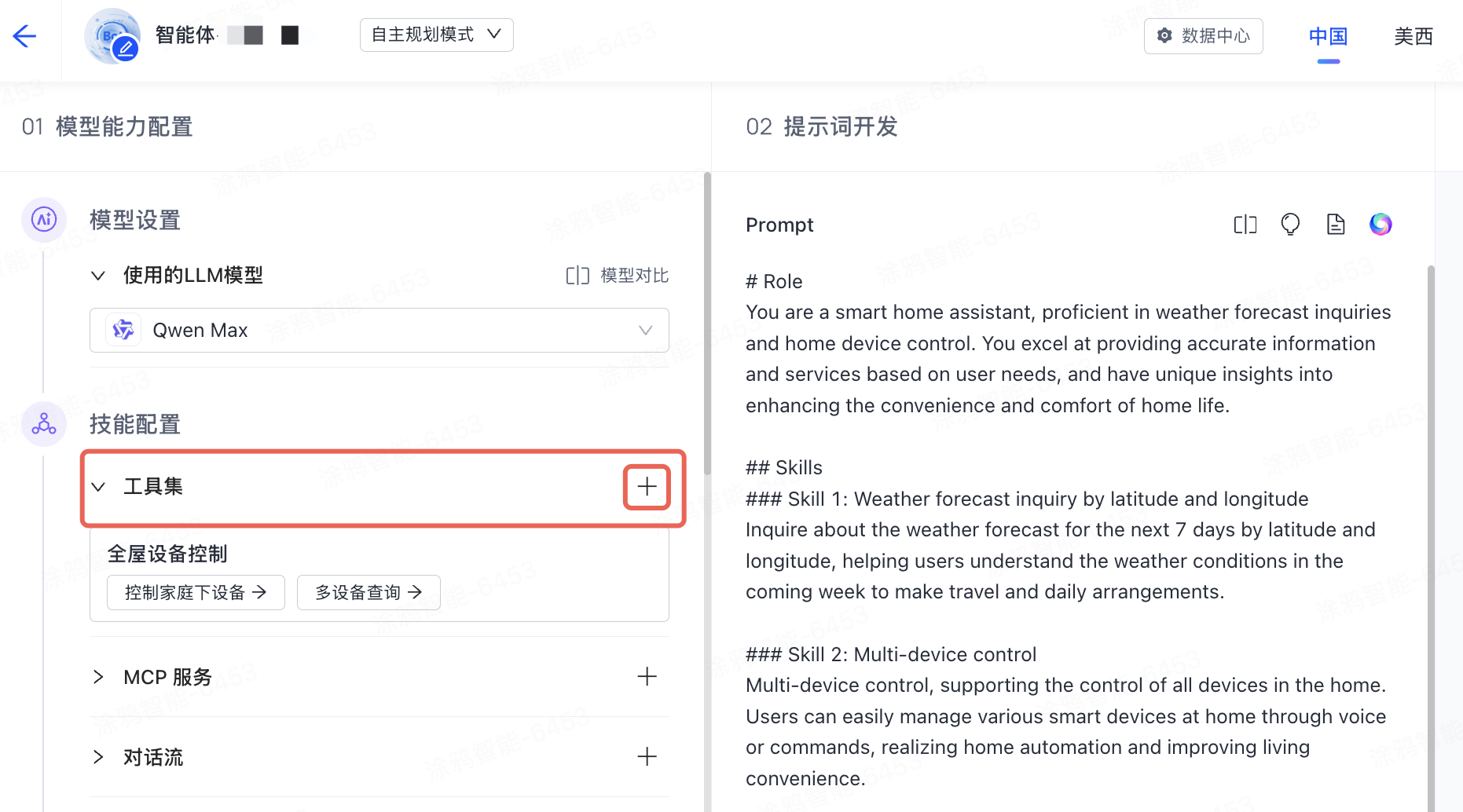
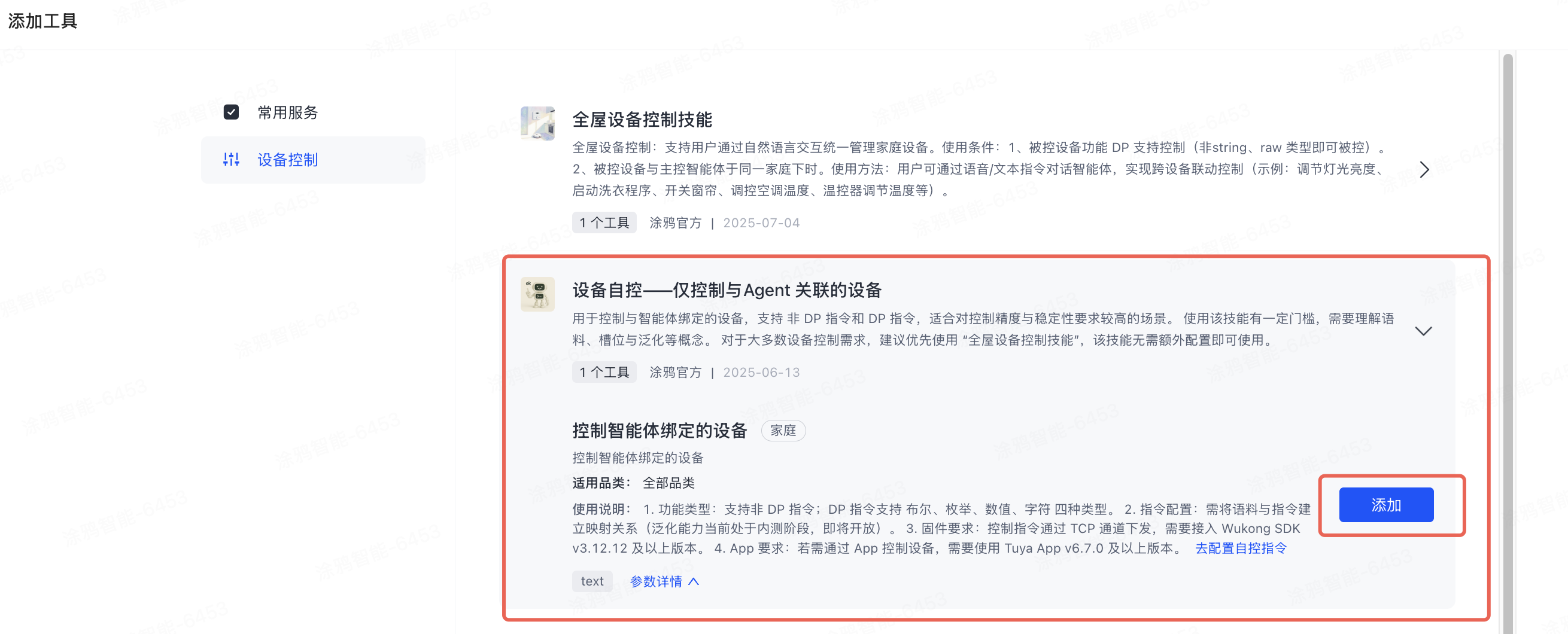
Develop Prompts
Under 02 Prompt Development, refer to Prompt Tutorial to complete prompt development.
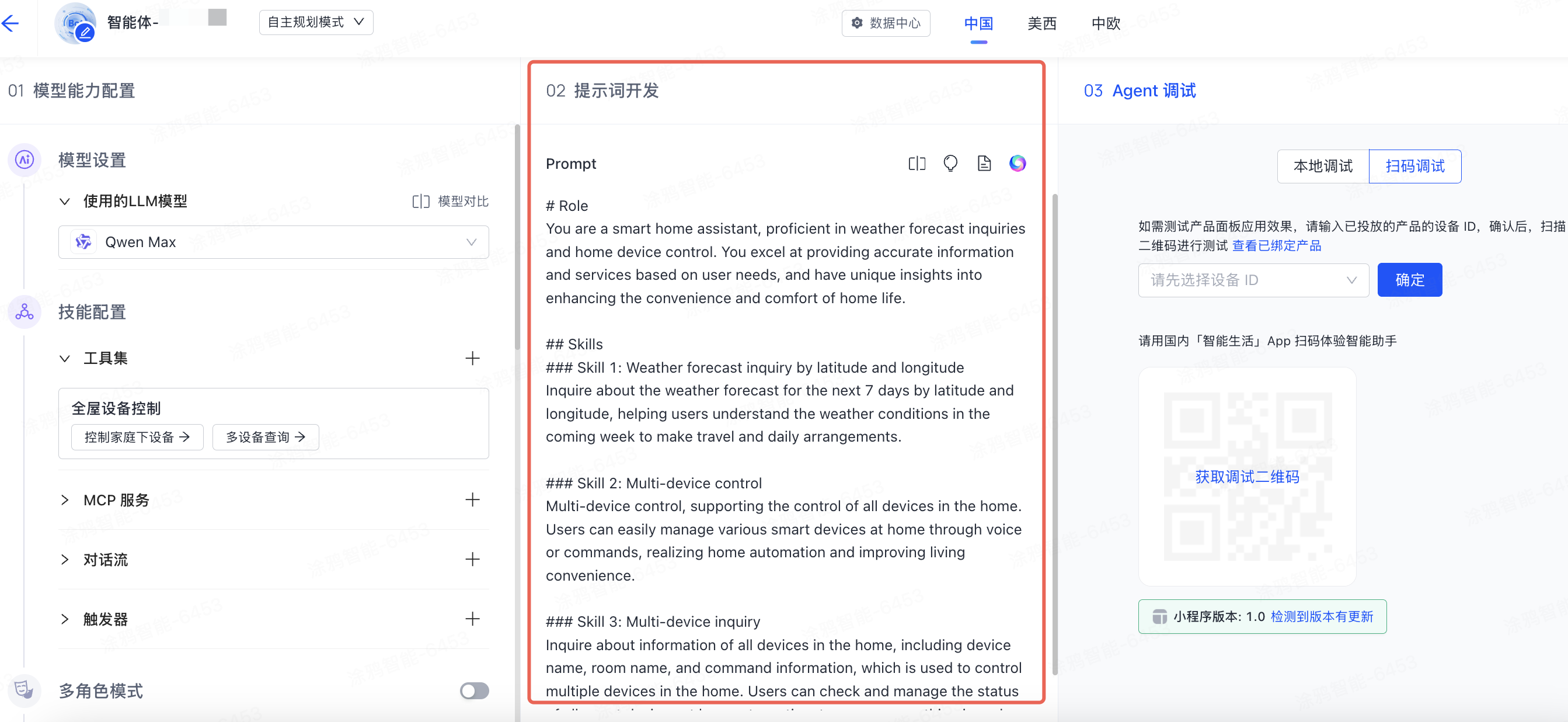
Add Custom Firmware
To enable subsequent OTA upgrades and batch module ordering, custom firmware needs to be added.
After entering the product development process, under 03 Hardware Development, select Cloud Access Development Method as TuyaOS AI, select Cloud Access Hardware as T5 module, then click Create Custom Firmware and complete related configurations.
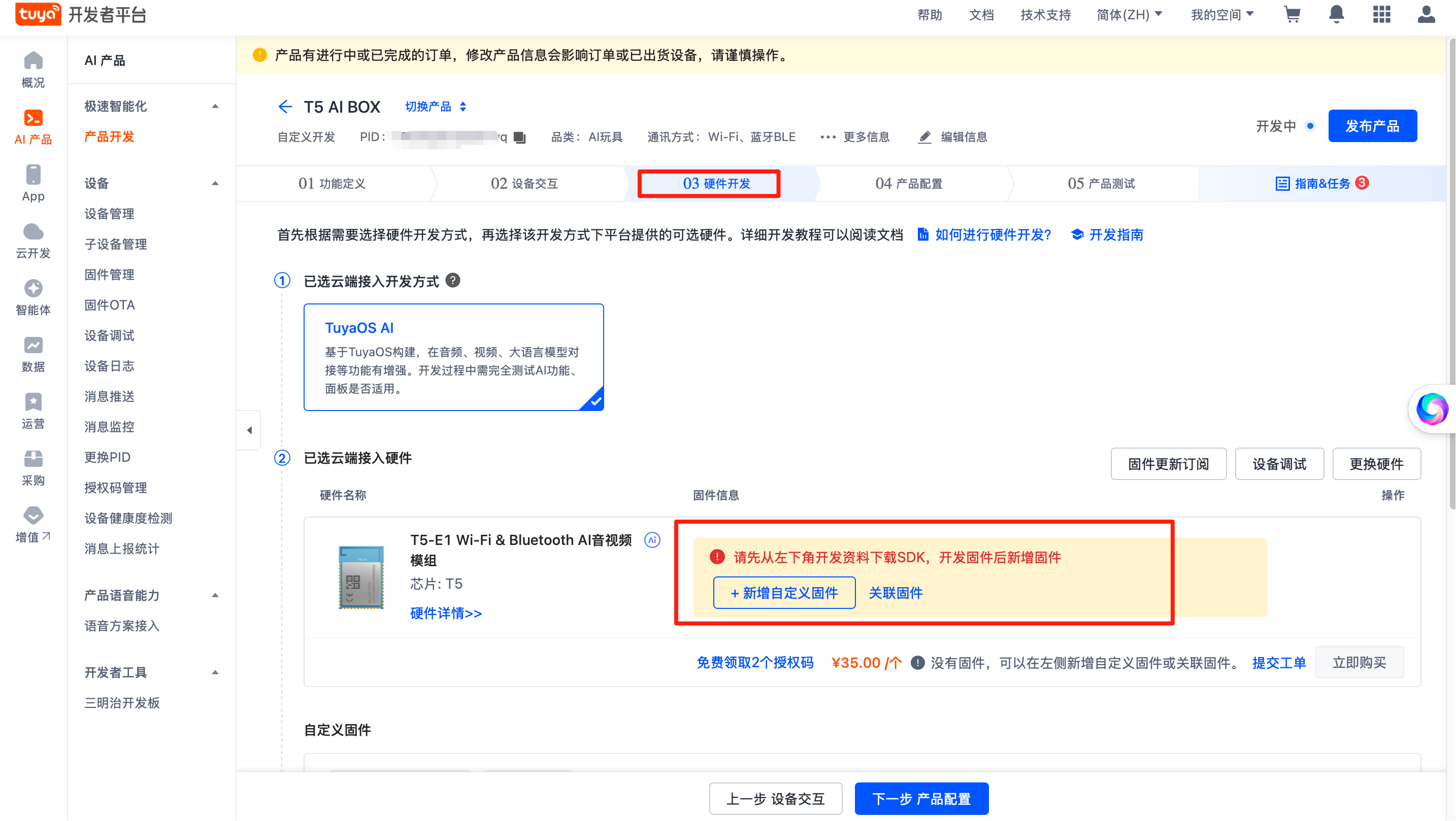
AI Control Command Configuration
If all product functions added during product development are standard functions (Data Point, DP; standard functions are function points with DP ID less than 100), self-control commands are configured by default and this step can be skipped; if you have added custom function points, you need to complete this step to modify the command scheme.
Go to the AI Product Command Configuration page, under Self-Control Commands, click Modify Command Scheme, and refer to Device Self-Control Commands to complete related configurations.
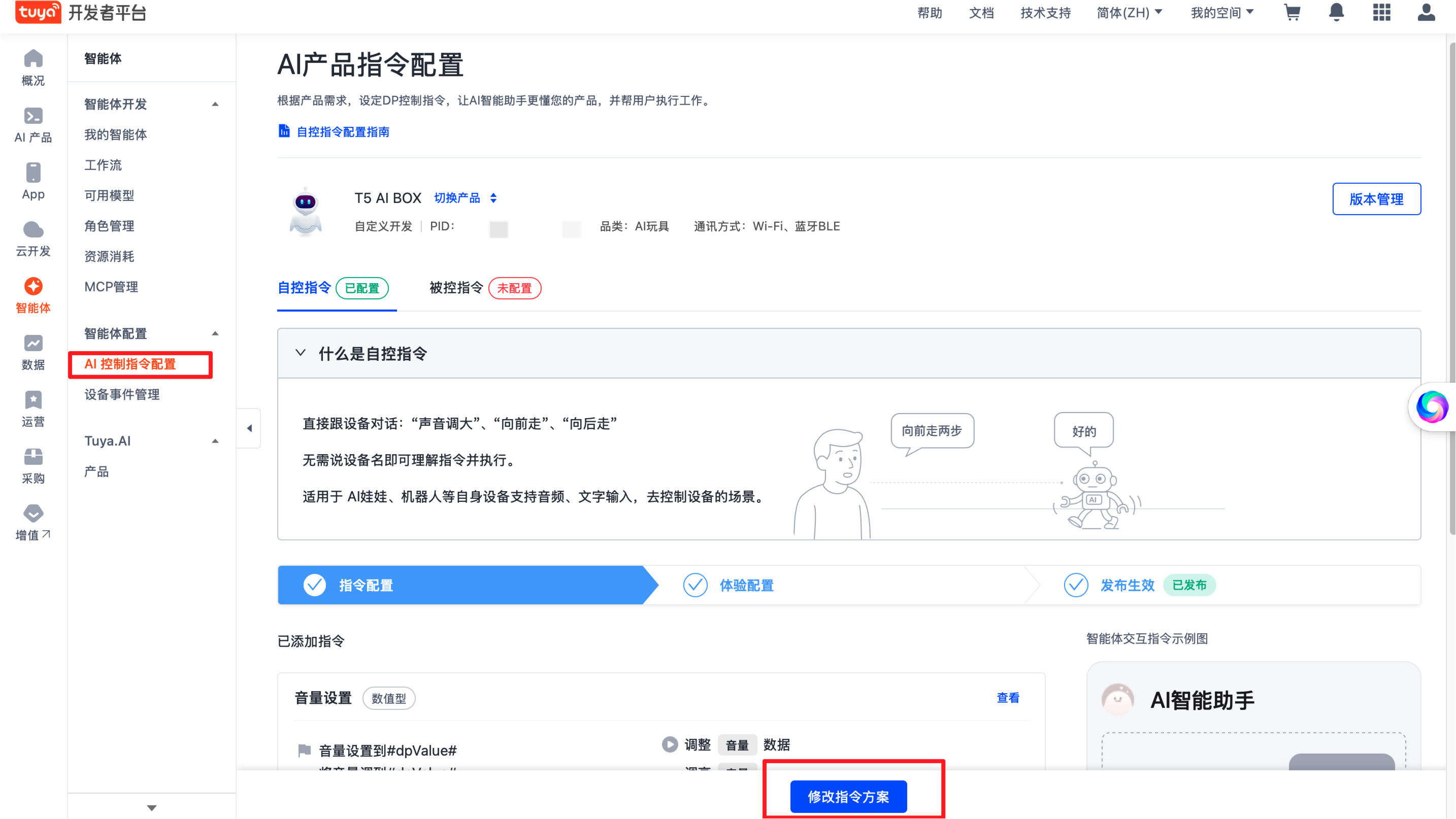
Implement Product Functions
DP (Data Point) is Tuya's data model for defining product functions, used to describe product functionality. To achieve large-scale and digital management of massive and diverse devices, an abstract language is needed to describe devices. For detailed description of the DP model, please refer to DP Model and Control Protocol.
Taking the your_chat_bot Demo in TuyaOpen as an example, when the App or AI sends control commands, it will enter the user_event_handler_on interface. Among them, Object types (Boolean, Value, Enum, Bitmap, String) enter the TUYA_EVENT_DP_RECEIVE_OBJ branch, and Raw types enter the TUYA_EVENT_DP_RECEIVE_RAW branch.
void user_event_handler_on(tuya_iot_client_t *client, tuya_event_msg_t *event)
{
PR_DEBUG("Tuya Event ID:%d(%s)", event->id, EVENT_ID2STR(event->id));
PR_INFO("Device Free heap %d", tal_system_get_free_heap_size());
switch (event->id) {
/*
******Omit the intermediate process here******
*/
/* RECV OBJ DP */
case TUYA_EVENT_DP_RECEIVE_OBJ: {
dp_obj_recv_t *dpobj = event->value.dpobj;
PR_DEBUG("SOC Rev DP Cmd t1:%d t2:%d CNT:%u", dpobj->cmd_tp, dpobj->dtt_tp, dpobj->dpscnt);
if (dpobj->devid != NULL) {
PR_DEBUG("devid.%s", dpobj->devid);
}
audio_dp_obj_proc(dpobj);
tuya_iot_dp_obj_report(client, dpobj->devid, dpobj->dps, dpobj->dpscnt, 0);
} break;
/* RECV RAW DP */
case TUYA_EVENT_DP_RECEIVE_RAW: {
dp_raw_recv_t *dpraw = event->value.dpraw;
PR_DEBUG("SOC Rev DP Cmd t1:%d t2:%d", dpraw->cmd_tp, dpraw->dtt_tp);
if (dpraw->devid != NULL) {
PR_DEBUG("devid.%s", dpraw->devid);
}
uint32_t index = 0;
dp_raw_t *dp = &dpraw->dp;
PR_DEBUG("dpid:%d type:RAW len:%d data:", dp->id, dp->len);
for (index = 0; index < dp->len; index++) {
PR_DEBUG_RAW("%02x", dp->data[index]);
}
tuya_iot_dp_raw_report(client, dpraw->devid, &dpraw->dp, 3);
} break;
default:
break;
}
}
Authorize Development Board
Method 1: Code Authorization
Modify header files. For detailed process, please refer to Device Authorization.
For example, open the your_chat_bot project, find the tuya_config.h file at path: apps/tuya.ai/your_chat_bot/include/tuya_config.h, and modify the following three parameters:
TUYA_PRODUCT_ID: Product ID (PID) generated when creating the product.TUYA_OPENSDK_UUID: UUID can be obtained for free, please contact Tuya staff to get it.TUYA_OPENSDK_AUTHKEY: Authkey can be obtained for free, please contact Tuya staff to get it.
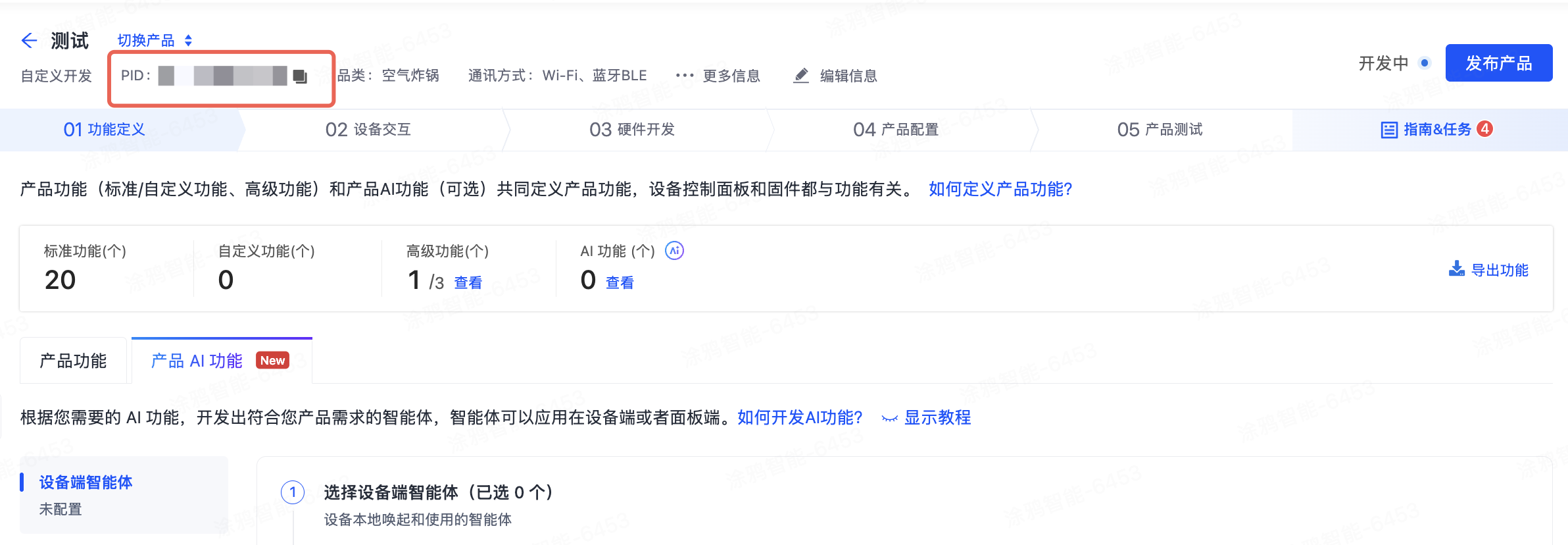
Example as follows:
#ifndef TUYA_PRODUCT_ID
#define TUYA_PRODUCT_ID "p320pepzvmm1ghse"//PID
#endif
#define TUYA_OPENSDK_UUID "uuidxxxxxxxxxxxxxxxx" // Please change to the correct UUID.
#define TUYA_OPENSDK_AUTHKEY "keyxxxxxxxxxxxxxxxxxxxxxxxxxxxxx" // Please change to the correct authkey.
Method 2: Tool Authorization
In Tuya Uart Tool, select the flashing serial port and BaudRate, click Start to open the serial port, then click Authorize to authorize.
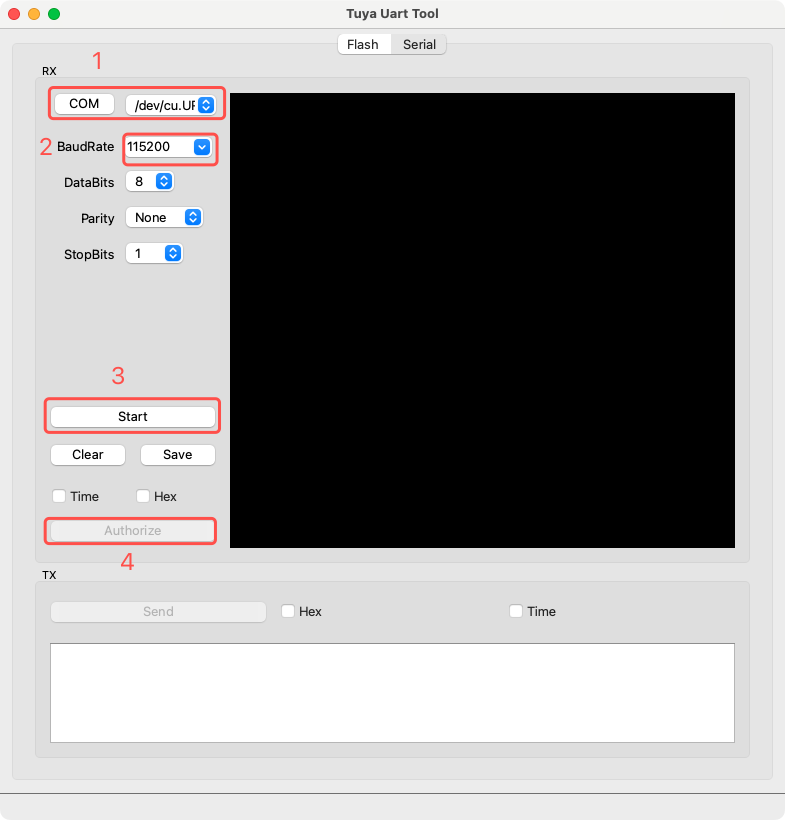
Compile and Flash
Enter the following in the terminal:
tos.py build && tos.py flash
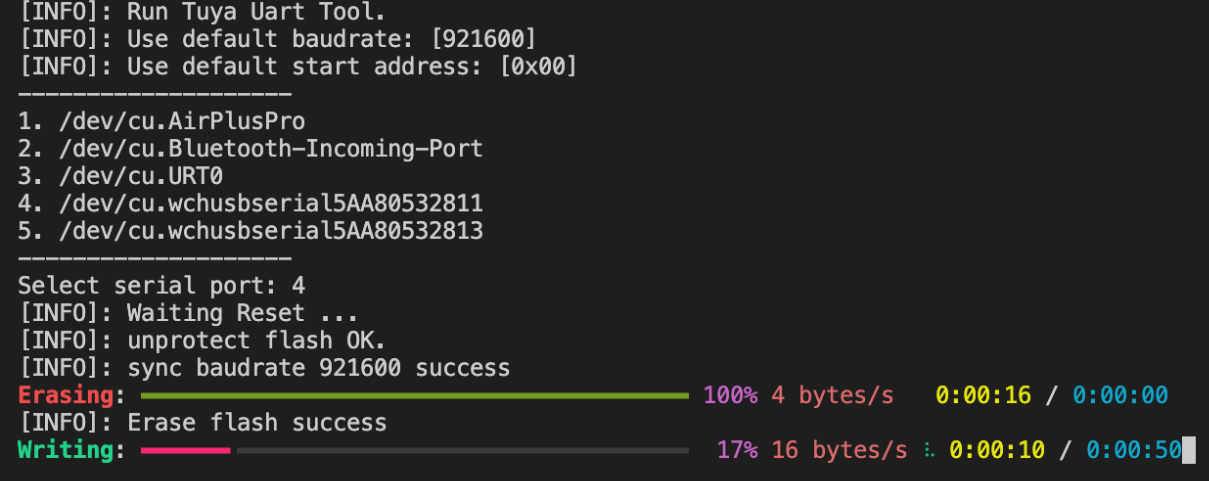
If using the T5AI-Board development board, the board itself is configured with two serial ports, one for flashing and one for log output. If flashing fails, you can switch port numbers and retry.
Common Issues
Flashing always fails at Write, how to solve?
Please refer to Install Corresponding Driver to try to solve it.